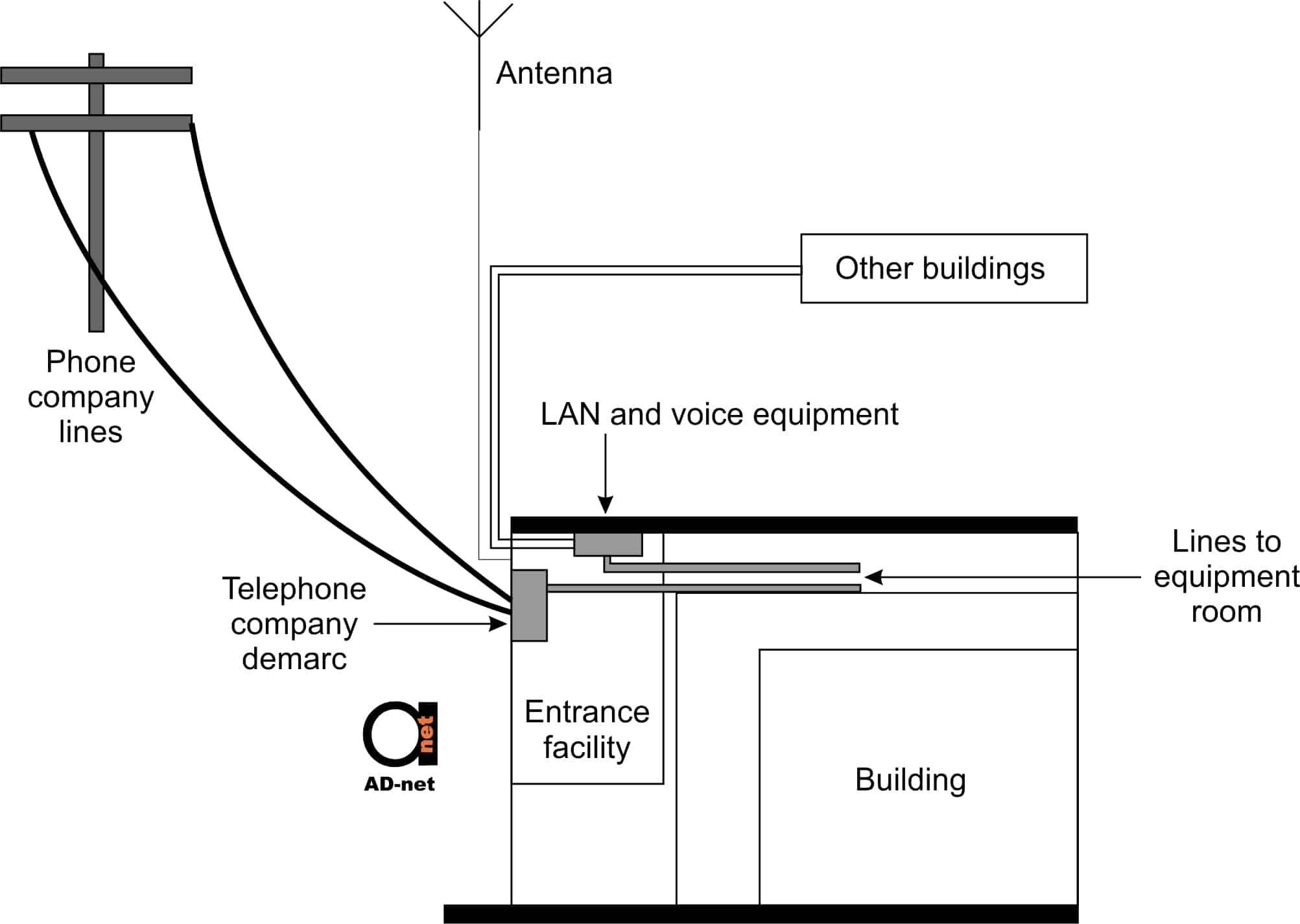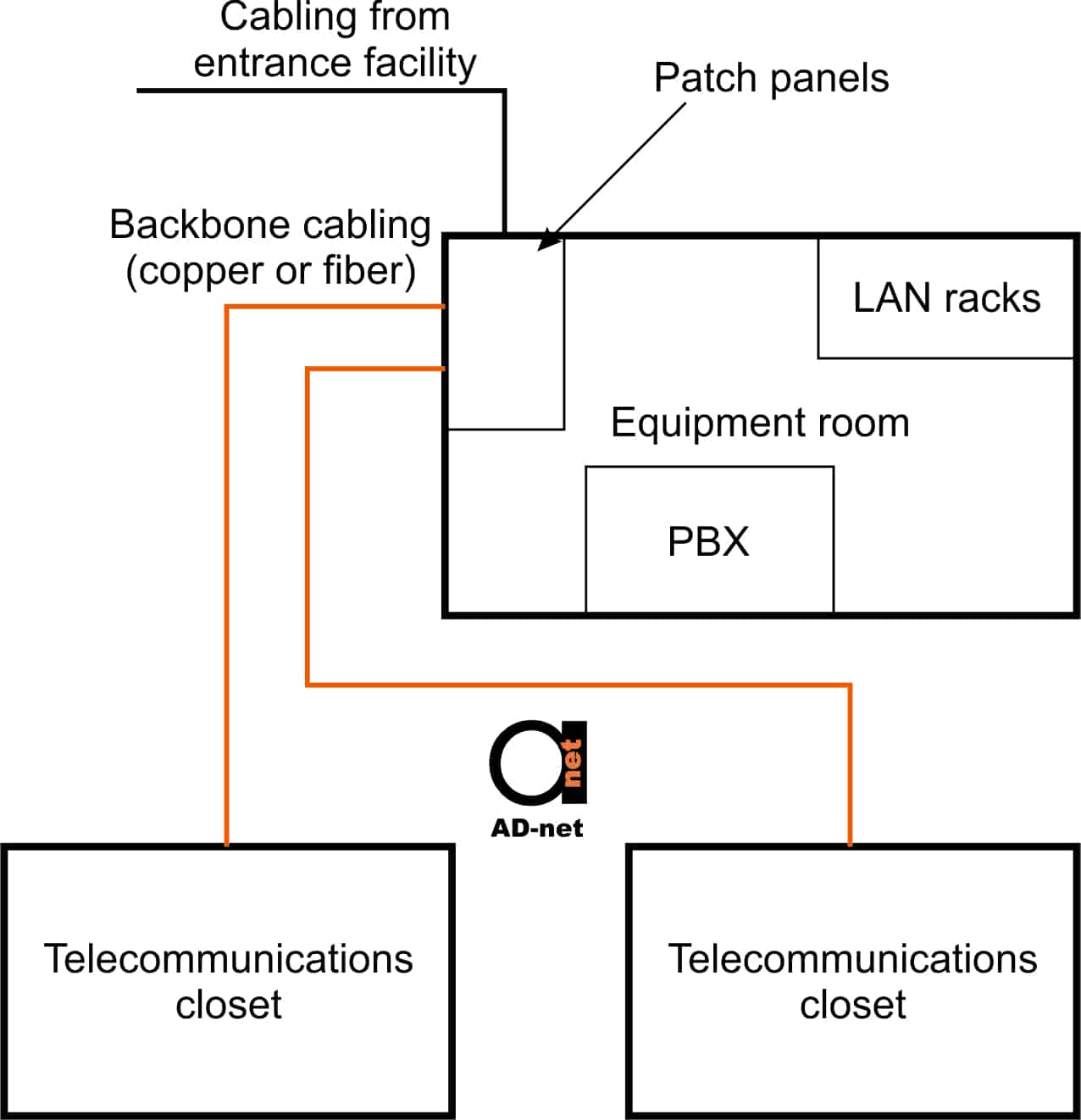Entrance Facility
AN SI /TIA-568-C.1 defines the entrance facility (building entrance) as the point in the building where cabling connects to the outside world. All external cabling such as telecommunications providers, inter-building, campus backbone and antennae pathways should enter the building and terminate at a single location. Telecommunications carriers are usually required to terminate their cables within 50 feet of a building entrance. TIA-569-C, the Commercial Building Standard for Telecommunications Pathways and Spaces, defines the physical requirements of the interface equipment. This specification covers cable pathways and telecommunications room design.
TIA-569-C recommends that a dedicated entrance facility be used for buildings that have more than 20,000 square feet that can be used. For buildings with more than 70,000 usable square feet, TIA-569-C recommends that a dedicated, locked room with plywood termination fields on two walls be used. The TIA-569-B standard recommends the number of plywood termination fields, based on the square footage of the building.
Demarcation point
The demarcation point, also called the demarc (pronounced dee-mark) is the point within a campus, property, or facility where circuits provided by outside vendors such as phone companies, terminates. The customer provides the cabling and equipment beyond this point. The customer is also responsible for maintenance and operation of equipment beyond the demarc.
The entrance facility and the equipment room may share space if this is required or possible. Telephone companies often define to the entrance facility as the demarcation point. Some entrance facilities are also used for PBX (private branch exchange) and telephone equipment.

Figure 1: Telephone company demarc point
Where possible, the entrance facility should be located in an area that can be physically secured, such as a locked room. This will improve voice and data security.
Equipment Room
ANSI/TIA-568-C.1 also defines the equipment room as the next subsystem of structured cabling. This centralized space is used to house more sophisticated equipment than what is located in telecommunications rooms or the entrance facility. Telephone and data networking equipment such as hubs, switches and routers are often located in the equipment room. Backbone cabling should be terminated in the equipment room, while computer equipment may also be stored there.
Smaller organizations often have the equipment room located in the same area as the computer room, which houses network servers and possibly phone equipment.
The equipment room is shown in figure 2.

Figure 2: Typical Scheme of Equipment Room
TIA-569-C contains information on the proper design of an equipment room.
Any room that contains telecommunications equipment, be it a telecommunications room or equipment room, should be physically secured.
Many systems, both voice and data, have had security breaches because anyone could gain physical access to the network equipment and cabling. Some companies even use electronic access and systems on their equipment and telecommunication rooms to prevent unauthorized access.


